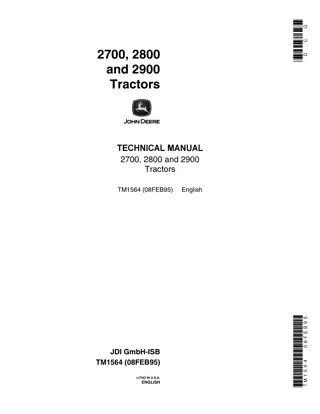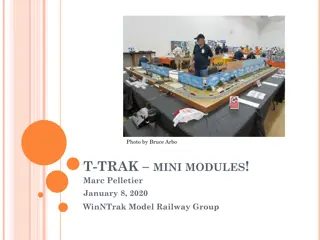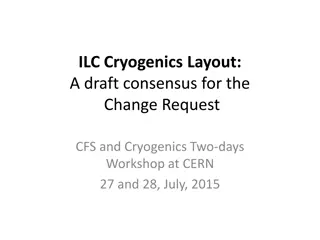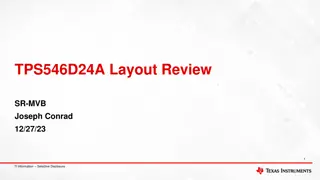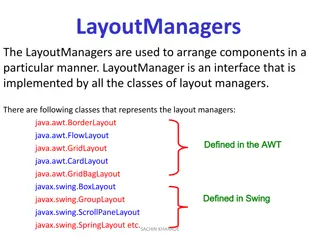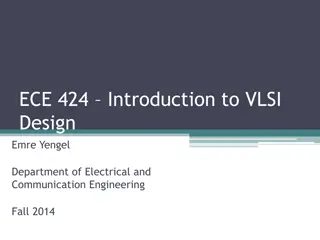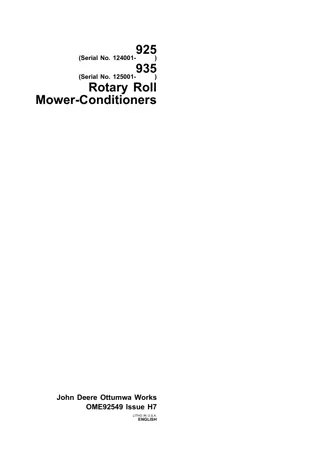
High-Speed Signal Trace Impedance Control Guidelines
Ensure strict adherence to impedance requirements for high-speed signal traces in layout design. Focus on achieving tightly controlled 50-Ohm single-ended impedance for DOUT+/- traces, maintaining continuous ground plane for reference, and implementing anti-pad strategies to minimize impedance mismatch and parasitic capacitance. Proper connector landing pattern verification is crucial for impedance management.
Download Presentation

Please find below an Image/Link to download the presentation.
The content on the website is provided AS IS for your information and personal use only. It may not be sold, licensed, or shared on other websites without obtaining consent from the author. If you encounter any issues during the download, it is possible that the publisher has removed the file from their server.
You are allowed to download the files provided on this website for personal or commercial use, subject to the condition that they are used lawfully. All files are the property of their respective owners.
The content on the website is provided AS IS for your information and personal use only. It may not be sold, licensed, or shared on other websites without obtaining consent from the author.
E N D
Presentation Transcript
1) Tightly-Controlled Impedance Requirements High-speed signal traces require tight impedance control Make sure that the single-ended DOUT+/- traces on the 935 each have tightly controlled 50-Ohms (+/-10%) single-ended impedance Single-ended impedance depends on a number of factors in your PCB, such as trace width, stack height, dielectric, etc The width of the DOUT+ trace seems inconsistent. Can customer verify that the single-ended impedance of the DOUT+ trace and the DOUT- trace is strictly within 50-Ohms (+/-10%)? DOUT+ (Pin 14) DOUT- (Pin 13) 2
2) Reference GND Plane High-speed signal traces (CSI-2 traces and DOUT+/- traces) need a continuous ground plane running underneath them in an adjacent layer. It seems the high-speed DOUT+/- traces are not always routed over the ground plane in the next layer. You need to make sure that the DOUT+/- traces are routed over a continuous, unbroken ground in the next layer in the PCB. DOUT+ (Pin 14) DOUT- (Pin 13) 3
3) Anti-Pads Remove the ground plane underneath only the landing pads of components along the DOUT+/- traces, such as the AC coupling capacitors and the PoC component touching the DOUT+ trace This minimizes the impedance mismatch caused by the width of the landing pads and also minimizes parasitic capacitance affecting the high-speed signal Make sure to maintain the ground reference plane underneath the rest of the high-speed signal trace Areas circled red are where the ground plane should be removed in the next layer. DOUT+ (Pin 14) DOUT- (Pin 13) 4
3a) Anti-Pad Example Here is a visual anti-pad example from the UB954 EVM User s Guide, which applies to the UB935 layout as well The top layer is a signal layer that has the routing for the high-speed RIN+/- traces. The second layer is a ground layer. The ground layer provides a continuous ground reference plane underneath the RIN+/- traces. There are AC coupling capacitors, a CMC, and a Ferrite Bead from a PoC network touching the RIN+/- traces on the top layer. The ground plane underneath the landing pads of all of the components along the RIN+/- traces is removed, in order to minimize parasitic capacitance and impedance mismatch. The ground reference plane is still running underneath the rest of the PCB traces. Layer 2 Layer 1 5
4) Connector Landing Pattern Recommend to use simulation to verify the effects of the connector landing pattern on the impedance Connector can introduce impedance mismatch. Follow the PCB footprint recommendations from the connector manufacturer to maintain a consistent 50-Ohm (+/- 10%) single-ended impedance through the connector DOUT+ (Pin 14) DOUT- (Pin 13) 6
5) Loosely-Coupled DOUT+/- Traces The DOUT- trace should be loosely-coupled to the DOUT+ trace and routed along the DOUT+ trace, all the way up to the connector Spacing between DOUT+/- traces should be at least 3 times the trace width, to minimize crosstalk This type of routing helps prevent noise from coupling onto the high-speed signal on the RIN+ trace and improves EMI/EMC test results The DOUT- trace should be routed along the DOUT+ trace (S>3W) and the 50-Ohms resistor should be terminated to ground near the connector. 50-Ohms RIN+ Example of recommended routing is in the right picture. RIN- 7
6) CSI-2 Make sure to double-check that all of the CSI-2 layout guidelines defined in the device datasheet are followed, as well as maintain a continuous ground plane under the traces See the next slides for more details. 8
7) DAP Landing Pattern There is a recommended land pattern for the UB935 in the device datasheets, with recommended ground vias through the board for thermal relief, ground connections, and recommended clearances around the DAP Recommend to use or reference this land pattern for customer design Ground vias in customer land pattern are not evenly distributed, which could lead to thermal issues. We recommend to use a design based on our recommended land pattern. Customers will need to verify that there are no thermal issues, when using their chosen landing pattern design on their own board. Also keep in mind that the ground vias leading to the DAP make the only ground connection between the UB35 device and the PCB board s ground plane, which means all switching current will travel along these ground vias. Any PCB trace routed near these ground vias may have noise coupled onto them. Make sure to keep high-speed signal traces and other sensitive traces away from the ground vias underneath the DAP. 10

